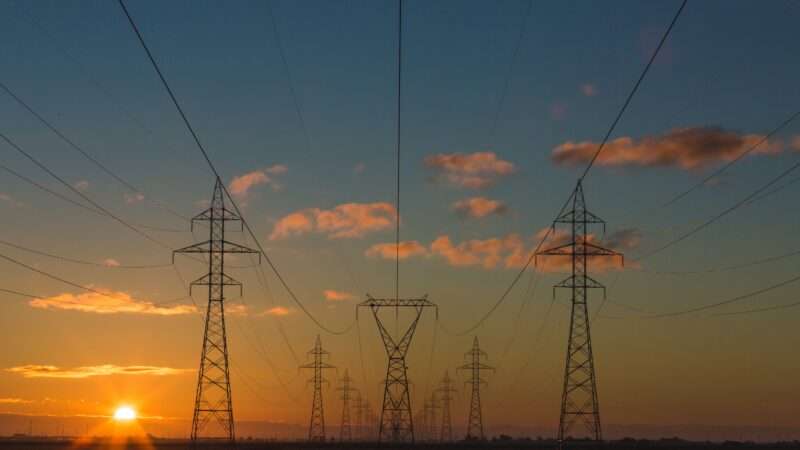
Unlike most major pieces of legislation that make it through Congress these days, the bill to raise the federal government’s debt ceiling was not larded up with hundreds or thousands of pages of unrelated policy.
But while most of the relatively trim Fiscal Responsibility Act was focused on the debt ceiling and a variety of associated provisions, like the non-defense discretionary spending caps imposed for the next two years, there was still room for a few unrelated items. Most significant among them: minor changes to federal environmental review processes aimed at reducing the absurd obstacles often placed on private and public infrastructure projects.
Environmental reviews and other permitting requirements are slowing the roll-out of green energy projects, delaying much-needed expansions of America’s power grid, and driving up the cost to build just about anything. It took 15 years for an electric supply line connecting a wind farm in Wyoming to the growing Las Vegas suburbs to clear all the permitting hurdles. That’s an arrangement that’s simply incompatible with a dynamic, growing economy.
The Fiscal Responsibility Act falls well short of solving those problems. Still, it might serve as an indication of bipartisan interest in addressing this mess.
“The permitting changes in the debt ceiling deal are a very small step in the right direction—emphasis on ‘small,'” Alec Stapp, co-founder of the Institute for Progress, which advocates for policies that accelerate technological and industrial progress, tells Reason.
The most significant policy change—or, perhaps, the least insignificant—is new limits on how long mandatory National Environmental Policy Act (NEPA) reviews can take. The Fiscal Responsibility Act incorporated some changes first proposed by the Trump administration’s Council on Environmental Quality (CEQ) in 2020 to limit NEPA environmental reviews to no more than two years and the resulting environmental impact statements to no more than 150 pages.
That’s a welcome change. As part of the process that originally produced those suggestions, the CEQ found that the average environmental impact study is 661 pages and typically takes more than four years to complete. Time is money, and all those delays are expensive. In its report, the CEQ cited a study, by the nonpartisan reform coalition Common Good, estimating that “the cost of a 6–year delay in starting construction on public projects costs the nation over $3.9 trillion, including the cost of prolonged inefficiencies and avoidable pollution,” as Reason‘s Ron Bailey reported at the time.
The environmental impact of major infrastructure projects is important to consider, but NEPA has devolved into a tool often wielded by opponents of development rather than sincere concern for the plight of the sage grouse. Placing limits on how long NEPA can delay a building project makes a lot of sense.
The NEPA tweaks included in the Fiscal Responsibility Act will “slightly improve the process,” says Stapp, “but the biggest problem—judicial review—was left untouched.”
Indeed, the Fiscal Responsibility Act’s limits on NEPA reviews don’t apply to the often-inevitable litigation that spirals out from them. Without that component, the new rules have a giant loophole—one that opponents of new construction will continue using to delay and drive up costs.
There’s one major exception to that, however. The Fiscal Responsibility Act does specifically exempt from judicial review one project: The Mountain Valley Pipeline, currently under construction in Sen. Joe Manchin’s (D–W.Va.) home state. “No court shall have jurisdiction to review any action taken by” federal or state agencies to issue permits “necessary for the construction and initial operation at full capacity of the Mountain Valley Pipeline,” the law reads, in part.
There are two ways to look at the Mountain Valley Pipeline carve-out in the law. It could be a special giveaway to Manchin, a crucial swing vote in the Senate and longtime advocate for permitting reform, to secure his support for the debt ceiling bill. Alternatively, it might be a precedent-setting example of how Congress can flex its authority to speed up critical infrastructure projects in the future. Only time will tell which it is.
After decades of expanding NEPA reviews and growing piles of red tape, even a small step in the right direction matters. The “give-and-take” necessary to get the Fiscal Responsibility Act through Congress with bipartisan support “naturally restrained its scope in any given direction,” writes Dan Goldbeck, director of regulatory policy for the American Action Forum, a free market think tank. “One hopes that substantive discussions on this topic will continue and that those conducted under non-crisis circumstances will yield a more robust set of reforms.”
When it comes to permitting reform, the Fiscal Responsibility Act is likely to serve more of a directional purpose than a substantial one. It’s an important acknowledgment of congressional support for limiting the NEPA process—a reform that should have been incorporated in President Joe Biden’s major infrastructure bill, if we’re being honest—even if it falls well short of fixing the problem.
The post Permitting Reforms in Debt Ceiling Bill Will Accomplish Little appeared first on Reason.com.
from Latest https://ift.tt/FvrzO5j
via IFTTT